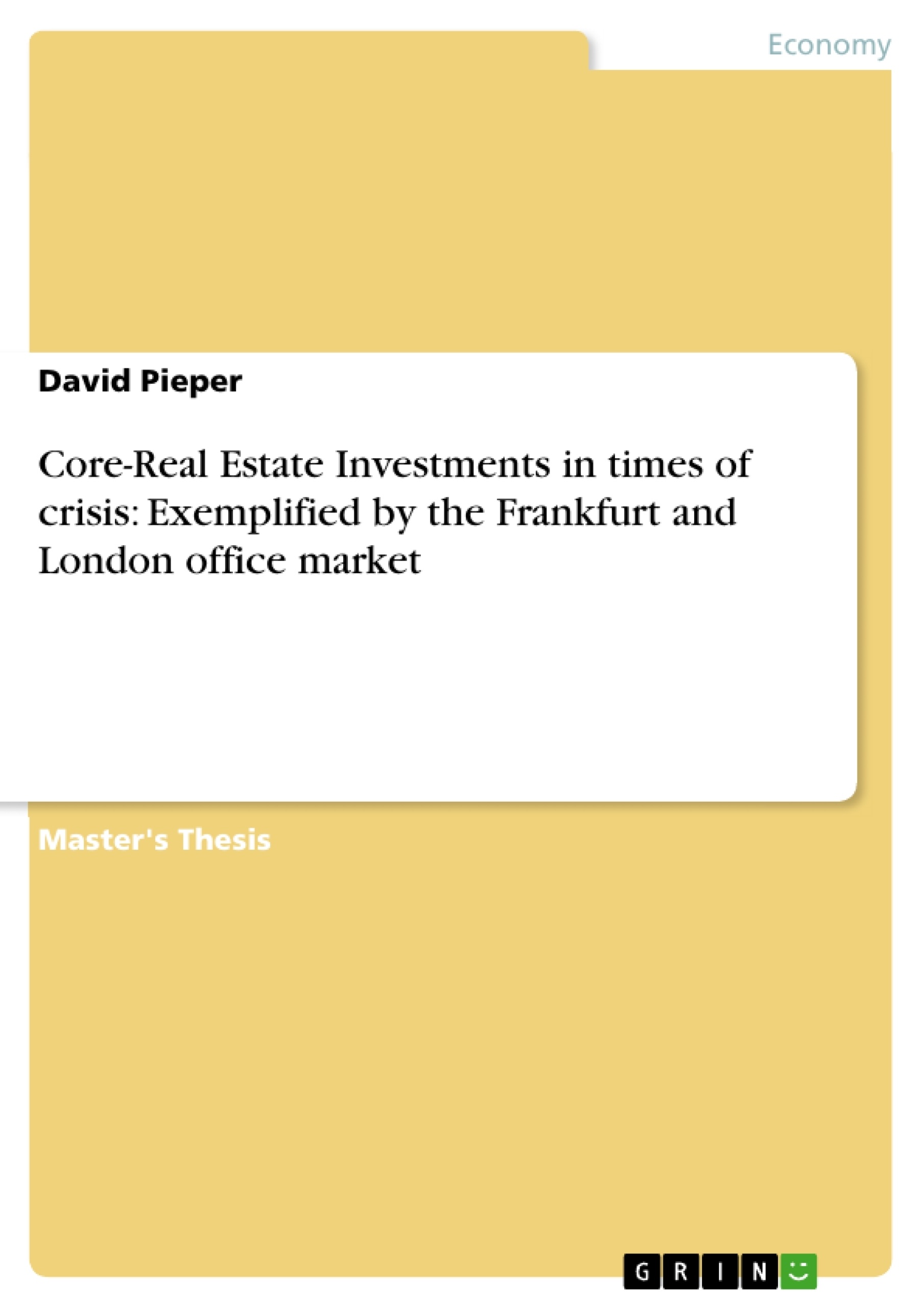“The basis of optimism is sheer terror.” This drastic quote by Oscar Wilde comes with a ‘core’ of truth. Through the last century’s history of money and financial markets the market players were usually driven by the same factors and financial laws. For once you have to accept more risk if you want higher yields and therefore you have to pay more if you want a higher security of your invested capital. And secondly, capital is shy and driven by fear and only partially rational rather than driven by emotions. No matter which crisis of for example the 20th century is analyzed, usually bubbles were often born slowly but steadily, market mechanisms failed and when too much money was available (often too cheap), prices of certain fields and goods went up drastically, investors became greedy and at the peak everything was bursting and fear was ruling. Afterwards, as for example after the dot.com-bubble, investments into these segments were rare and trust needed to be built up again.
The commercial and professional real estate market theoretically is in this regard not different from other markets. A usual behavior in times of crises is the wish for more security, more stable investments, and meaning significantly less volatile and ideally very liquid and realizable investments on a market. Capital Investments should be “safe havens” and rather bring little or less money than losing heavily or all. In the current time of crisis, after the initialized 2008 Lehman Brothers crash and the following
subprime crises, followed by the global recessions in mostly 2009, some countries 2010 and even today in the days of the European and global sovereign debt crisis real estate investors are as an international phenomenon shifting money into secure real estate and
on the professional site into “core commercial real estate” in A-markets.
Inhaltsverzeichnis (Table of Contents)
- Introduction
- Leading-in
- Problem Statement
- Goals of Studies
- Approach
- Classification of the real estate asset class and strategy "core"
- Current definition of core
- Market for office core investments - putting core into general context
- Requirements to the asset class core
- New definition of "core"
- Potential risks to core investments
- Geographical and market risks
- Volatility risk
- Change of location risks
- Illiquidity risk
- What is labeled core is not necessarily core risk
- Tenant and renting risk
- Refurbishment and or sustainability costs risk
- Demographic factor risks
- Potentially overheated prices risk
- Secondary investment risk
- Inflation risk
- CMBS risk
- Last resort risk
- The two markets and there characteristics and differences as an example
- London office market
- Where are the core markets?
- Characteristics of this market
- Is core potentially overheating?
- Frankfurt office market
- Where are the core markets?
- Characteristics of this market
- Is core potentially overheating?
- Sovereign and financial crisis's and their impact on commercial real estate
- The current situation and crisis definitions
- Drivers of crises, is this a normal crisis behavior and situation?
- What are the alternatives to office core commercial real estate?
- Where are institutional investors currently invested in?
- Potential Alternatives
- Core Retail
- Core Residential
- Core Investment in emerging markets
- Core locations but not core markets
- Secondary
- refurbishments and or management optimizations
- Development of core buildings
- Blue-Chips
- Debt
- Holding Cash
- Conclusion
- Final Statement
Zielsetzung und Themenschwerpunkte (Objectives and Key Themes)
This master thesis aims to provide a thorough analysis of the core real estate investment strategy in times of crisis, focusing specifically on the office markets of Frankfurt and London. The study examines the definition of core investments, the characteristics of core markets, and potential risks associated with this strategy in the context of financial and sovereign crises.- Defining "core" investments in real estate, specifically focusing on the office market.
- Analyzing the impact of financial and sovereign crises on the core real estate market.
- Comparing the characteristics of the Frankfurt and London office markets, including potential overheating.
- Identifying alternative investment strategies to core real estate in times of crisis.
- Assessing the current state of institutional investor activity in various real estate sectors.
Zusammenfassung der Kapitel (Chapter Summaries)
- The introduction lays out the problem statement, outlining the challenges of core real estate investments during crisis periods. It defines the scope and objectives of the study, highlighting the focus on Frankfurt and London office markets.
- Chapter two dives into the definition and classification of "core" real estate investments. It examines the evolving meaning of "core" in the context of market dynamics and risk factors. It also explores potential risks associated with core investments, including geographical, volatility, and liquidity risks.
- Chapter three analyzes the characteristics and differences between the Frankfurt and London office markets. It assesses the location of core markets within each city and explores the potential for overheating in both markets.
- Chapter four delves into the impact of sovereign and financial crises on commercial real estate. It explores the definition of these crises and examines the drivers behind them. It also discusses whether current crisis behavior aligns with historical patterns.
- Chapter five explores alternative investment strategies to office core commercial real estate. It investigates current institutional investor activity and presents a range of potential alternatives, including core retail, core residential, emerging markets, and secondary investments.
Schlüsselwörter (Keywords)
This master thesis focuses on core real estate investments, especially in the office market, and explores its performance during financial and sovereign crises. The study examines the core definition, risk assessment, and alternative investment strategies in the context of Frankfurt and London office markets. Important concepts include volatility risk, illiquidity risk, market overheating, and institutional investor activity.- Citation du texte
- David Pieper (Auteur), 2012, Core-Real Estate Investments in times of crisis: Exemplified by the Frankfurt and London office market, Munich, GRIN Verlag, https://www.grin.com/document/192385



